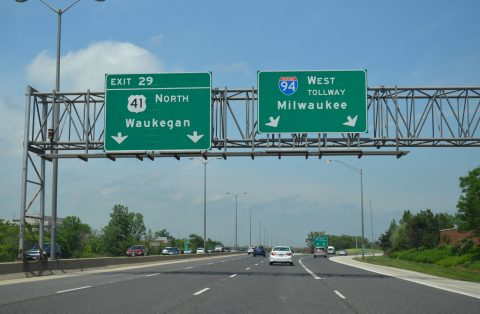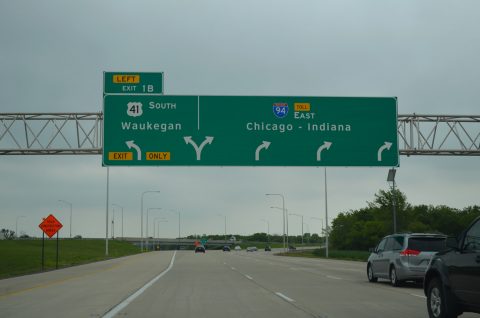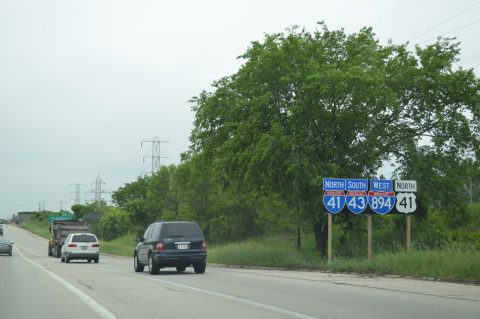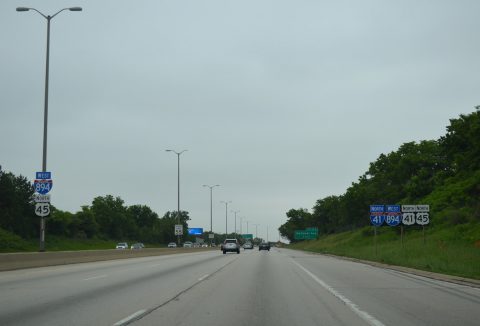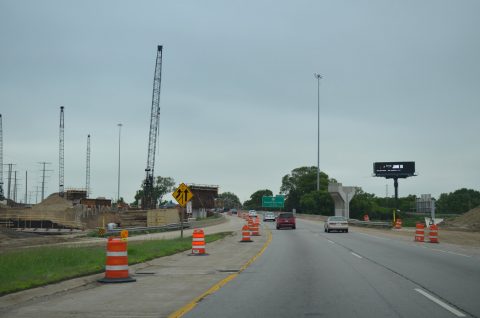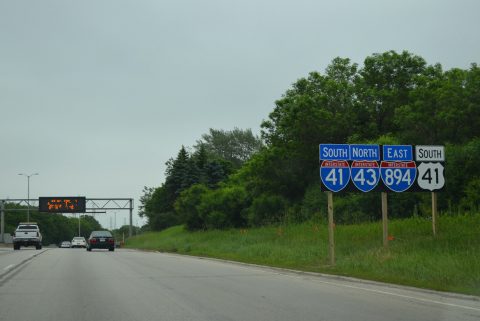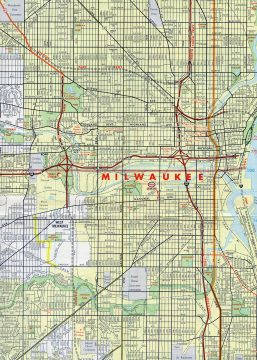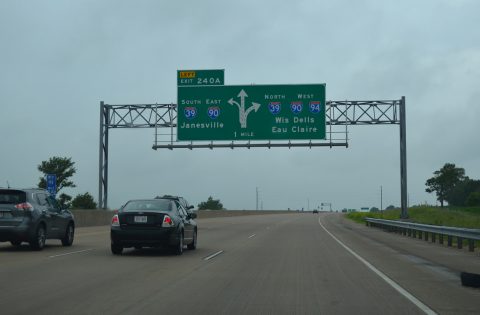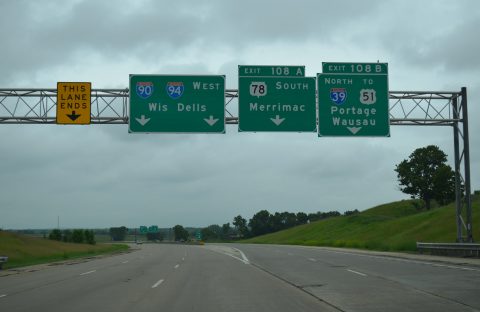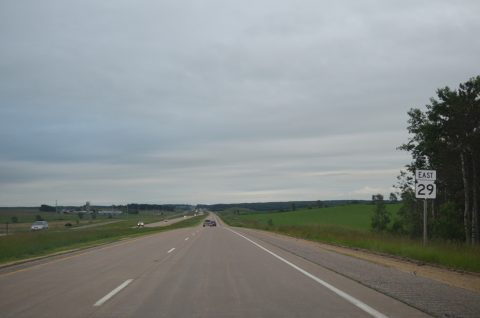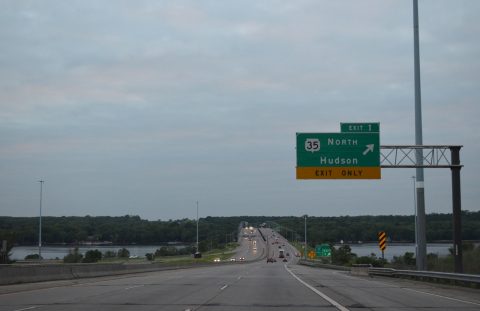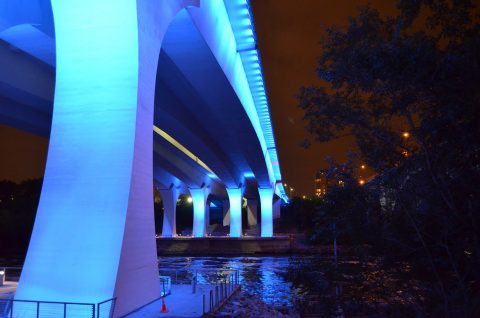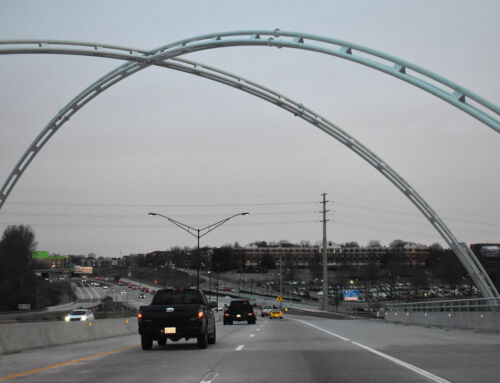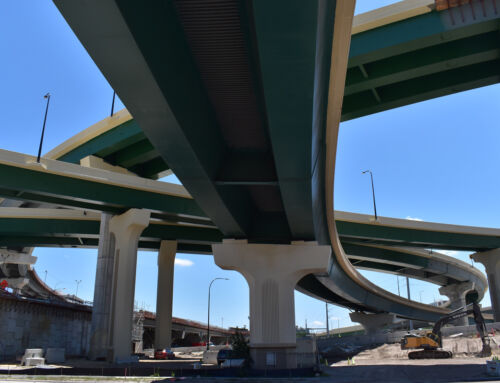The first of a 4,700 mile eight-day tour of the Upper Midwest and Great Plains kicked off from Chicago, taking us north to Milwaukee and west to Madison, Wisconsin Dells, Eau Claire and St. Paul, Minnesota.
Interstate 41 was approved by AASHTO on November 15, 2012. The newest Interstate in Wisconsin runs in tandem with I-94 from Exit 1B northward to I-894, along side I-894 west to I-94 again, and along the remainder of U.S. 41 to just north of the end of Interstate 43 outside Green Bay.
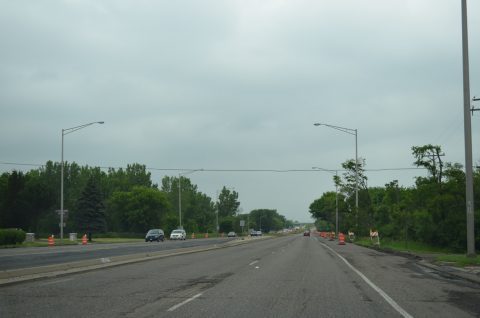
U.S. 41 north leaves the signalized intersection with illinois 173 to become an expressway through to Interstate 94. This is now the northbound beginning of I-41.
Work to begin signing Interstate 41 in Wisconsin started in May 2015. Over 3,200 signs will be added to the 176-mile route by September 2015.
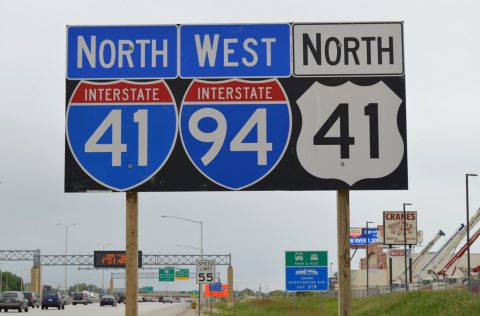
The first I-41 shield posted along I-94 westbound appears ahead of the diamond interchange (Exit 319) with Milwaukee County ZZ (College Avenue).
Interstate 894 will remain posted as the through route bypass for motorists taking Interstate 94 away from Milwaukee. The addition of I-41 creates a three-way overlap along the south leg of I-894 with I-43 tieing in from New Berlin and south Milwaukee.
This interchange was redesigned to eliminate left-hand ramps as part of a fall 2012 completed three-year $256-million project.
Major work through 2018 is underway involving the exchange with Interstate 94 and approaches in all directions. A symmetrical stack interchange will replace an antiquated interchange currently in use with left-hand ramps.
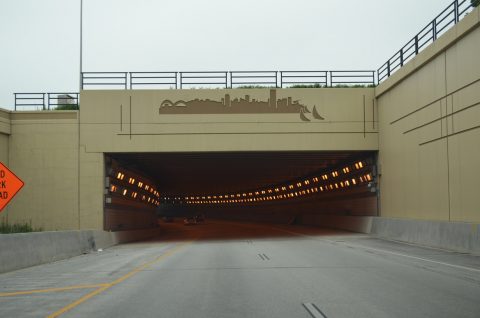
The redesigned Mitchell Interchange features two tunnels: one carries I-43 north onto I-94 west here while the other takes I-41 north onto I-43 south & 894 west.
The Marquette Interchange, where Interstates 43, 94 and 794 come together by Downtown Milwaukee, was similarly overhauled during a major project completed between 2005 and December 2008.
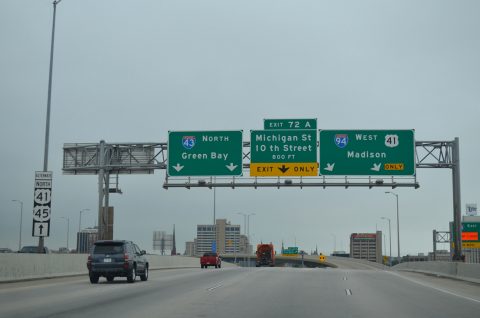
I-43 north retains the mainline movement through the Marquette Interchange as I-94 exits itself to continue west toward Madison.
Heading west through Milwaukee, Interstate 94 used to overlap with U.S. 41 through to the interchange with Miller Way. This changed with the approval of Interstate 41, whereas all of U.S. 41 between Illinois and Green Bay is run concurrently with the new Interstate highway. This left a portion of U.S. 41 running north from I-94 to Appleton Avenue as an extension of Wisconsin 175 south.
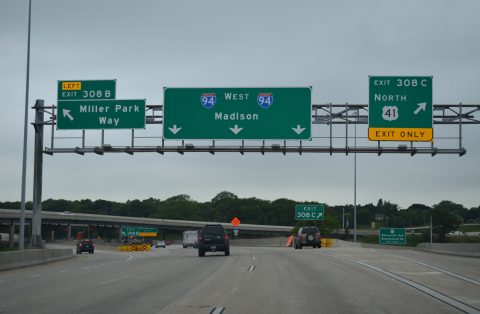
Interstate 94 west reaches the Stadium Interchange with Wisconsin 341 (Miller Park Way) south and new Wisconsin 175 north.
The Stadium Interchange is a symmetrical interchange with left-hand ramps in all directions. Its design hearkens to when the Stadium Freeway was proposed as a much longer route both south to Interstate 894 and north to the unconstructed Park Freeway and Uptown Milwaukee. Long range plans call for a redesign of this junction and widening of I-94. However with a $1-billion plus price tag, funding remains uncertain and the earliest any work might start is 2019.
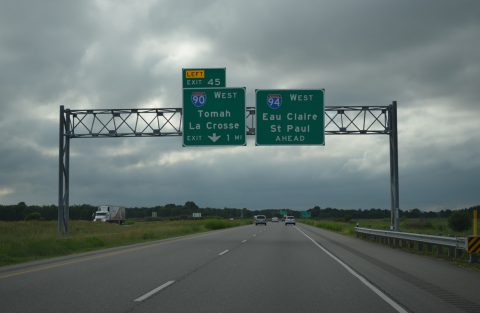
A directional T interchange outside the city of Tomah handles the split of Interstate 90 west to La Crosse and Interstate 94 west to Eau Claire.
Wisconsin 29 constitutes a varying expressway and freeway route from Interstate 94 at Elk Mound east to Interstate 41 at Green Bay. Interchanges along the route are numbered and the expressway portions are rural in nature without signalized intersections. It would not take a lot to bring the remainder of this route to freeway standards, though farm access and driveways would require frontage road construction.
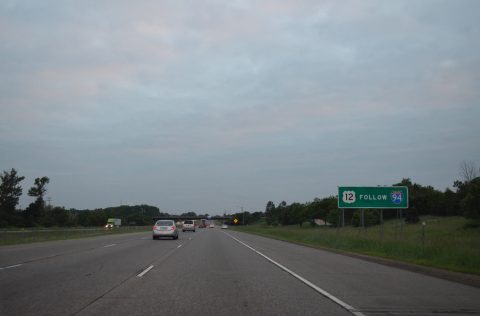
MnDOT generally omits U.S. highway overlaps along long stretches of Interstate highway. Instead, a sign will reference the US route near the beginning of its freeway overlap while the remainder of the concurrency is unsigned. This occurs with U.S. 52 along I-94 and U.S. 12 again along I-394 as well.
We concluded our day with a stop along the Mississippi River front in Downtown Minneapolis. Among the sights there is the Interstate 35W Mississippi River Bridge, which is illuminated from underneath and lined with animated lighting on the side. We traveled across the former bridge in April 2007, just months before its tragic collapse. The replacement Saint Anthony Falls Bridge was opened to traffic on September 18, 2008.

